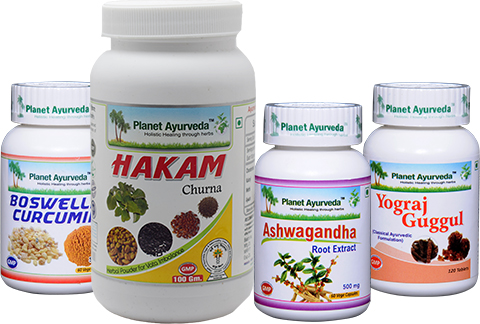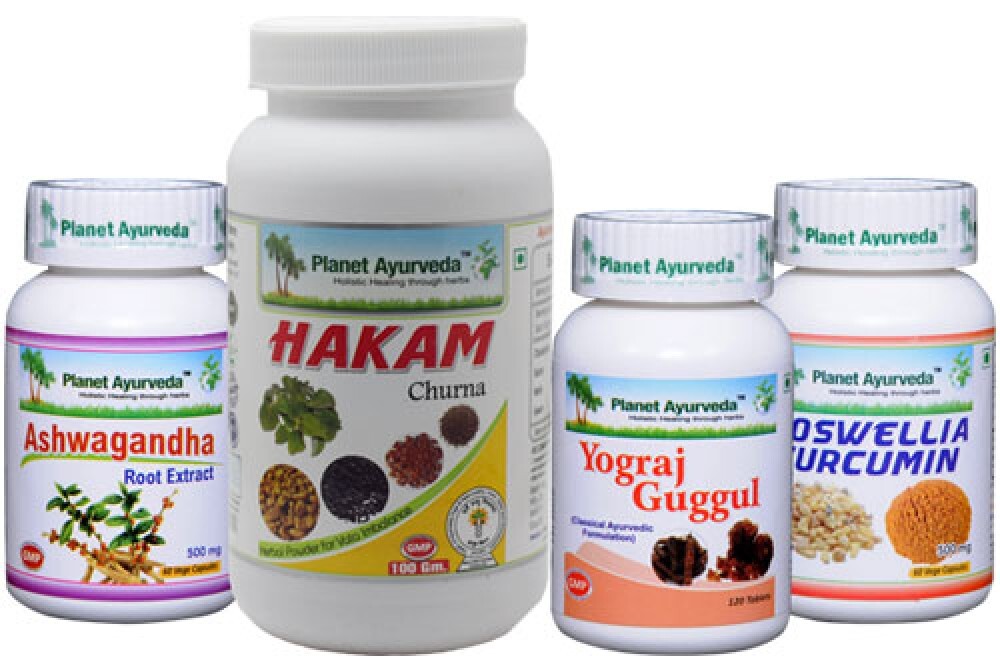Natural Ayurvedic Treatment Of Trigeminal Neuralgia
ABSTRACT
The human body is a complex structure made up of nerves, muscles, bone, connective tissues, ligaments and many more. Every structure has its specific area of function. Nerves are also part of this complex structure. These nerves work the function of carrying electrical impulses from the brain to the body or vice versa. These electrical impulses carry massage from brain to body or body to the brain and thus help in the normal functioning of the body. The Trigeminal nerve or Cranial nerve V, is a complex and largest nerve as compared to other cranial nerves (12 in number). This nerve works as sensory, motor and autonomic function. This nerve is mainly responsible for the sensation of temperature, touch and pain perception. Here, in this article, we are going to study Trigeminal Neuralgia which occurs when blood vessels put pressure on the Trigeminal nerve. Now let’s start a detailed study of Trigeminal Neuralgia and its other aspects.

INTRODUCTION
Trigeminal neuralgia is a chronic disorder in which a patient suffers from pain in the face where a supply of Trigeminal nerves is present. This pain starts from near the top of the ear and splits towards the jaw, eye and cheek. Usually, the pain in the case of Trigeminal Neuralgia occurs on one side of the face i.e. unilateral, as these nerves are present on both sides of the face separately. The patient with Trigeminal Neuralgia suffers from severe and sudden pain attacks in the facial regions. This disease is more common in females as compared to males. The Trigeminal nerve which carries signals from the face to the brain is affected by this disease. Initially, this disease starts from mild and short episodes of pain but with time when the condition is worse, the duration of the period of pain is increased. Now, we are going to study about causes, symptoms, signs, diagnosis, diet and home remedies for Trigeminal neuralgia. Also, we go through a detailed study about Ayurvedic treatment for trigeminal neuralgia and home remedies for trigeminal neuralgia by Planet Ayurveda. Let’s start!
CAUSES OF TRIGEMINAL NEURALGIA
The causes of Trigeminal neuralgia are as follows
- When any blood vessel puts pressure on the trigeminal nerve and disrupts its normal function
- Any tumour pressing against the trigeminal nerve
- Any facial trauma
- Any injury due to surgery
- Multiple Sclerosis in which myelin sheath is damaged that protects nerves.
There are some trigger factors that can lead to pain in the patient with Trigeminal neuralgia as follows
- Shaving, brushing the teeth, putting on makeup
- Eating, drinking, talking or smiling
- Touching face, a light breeze blowing through the mouth
- Applying pressure on the face
SIGNS OF TRIGEMINAL NEURALGIA
The primary sign of Trigeminal neuralgia is a sudden and shooting pain on the affected side of the face. This pain is similar to an electric shock. This pain may be triggered by chewing, touching the face, brushing and other activities in which the face is involved.
SYMPTOMS OF TRIGEMINAL NEURALGIA
Symptoms of Trigeminal neuralgia are sudden and last from a few seconds to about 2 minutes. Following are some of the common symptoms of Trigeminal neuralgia
- Sudden, intense pain in the face
- Facial spasm
- Pain in the regions where trigeminal nerve supply is present like the cheek, jaw, gums, lips and teeth. Sometimes this affects the eyes and forehead also
- Mainly the pain focused on one point of the face
- The intensity of episodes of pain increases with time
- The attacks of the pain rarely occur at the time of sleeping
- Usually, the pain affects one side of the face but in some patients, it may be on both sides but the pain attacks occur on one side at a time
कुर्वन्ति साक्षिभ्रुवि शङ्खदेशे स्थितिम् करोत्याशु विशेषतस्तु ||
गण्डस्य पार्श्ववे तु करोति कम्पम् हनुग्रहम् लोचनजंश्च रोगान् |
अनन्तवातम् तमुदाहरन्ति दोषत्रयोत्थम् शिरसो विकारम् ||
According to the above text, aggravation of all three doshas, that is Vata, Pitta and Kapha, press both nerves or blood vessels (Manya nadis) on either side of the neck and produce severe pain in the neck region. These doshas are also lodged in the eyebrows, temples and eyes and cause pulsation in affected areas.
DIAGNOSIS OF TRIGEMINAL NEURALGIA
Diagnosis of Trigeminal neuralgia can be done by the combination of history of the patient and physical examination. Some other diagnostic tests that are useful in the diagnosis of Trigeminal neuralgia are as follows
- MRI (magnetic resonance imaging) to identify nerve damage, compression by blood vessels or any tumour that compresses trigeminal nerves.
- Neurological examination to identify the site of pain, intensity and frequency of the pain by touching that part of the face.
- Some other tests like CBC, CT, electromyography etc to rule out other associated conditions.
AYURVEDIC OVERVIEW OF TRIGEMINAL NEURALGIA
Trigeminal neuralgia is a chronic disorder which is characterised by severe and sudden attacks of pain in the face regions. These attacks may vary from person to person and severity of the disease. This pain can be described as a stabbing sensation and feels like an electric shock in the affected region. This pain mainly affects the jaw teeth and gum area of the face. This disorder consists of neuropathic pain that affects the Trigeminal nerves of the face region. In Ayurveda, Trigeminal Neuralgia correlates with Anantavata. The word Anantavta is derived from Anant which means severe pain and Vata which shows the predominant involvement of Vata dosha. The vitiation of all three Dosha (Vata dominant) presses the Manya Nadis or nerves and blood vessels and causes severe pain in the back of the neck region. This pain also involves the eyes, eyebrows, upper jaw and nose.
DIET FOR TRIGEMINAL NEURALGIA
- Fruits like Apple, bananas, watermelon, pears, peaches, muskmelon, pomegranate, litchi and berries
- Vegetables like spinach, fenugreek leaves, carrot, beetroot, pumpkin, broccoli, kale, bottled gourd and cauliflower
- Spices like fenugreek seeds, turmeric, ginger, cinnamon, cumin seeds, coriander, pepper and fennel seeds
- Pulses like green grams, pigeon peas, yellow lentils
- Dry fruit like flax seeds, almonds, walnuts, chia seeds, pumpkin seeds and sunflower seeds
HOME REMEDIES FOR TRIGEMINAL NEURALGIA
- Application of cloth soaked in warm water on the affected area where pain attack occurs
- Application of warm mustard oil on the affected area
- Use soft toothbrush
- Avoid hot water or cold water to wash your face
AYURVEDIC TREATMENT AND PANCHKARMA FOR TRIGEMINAL NEURALGIA
सिराव्यधश्च कर्तव्योअनन्तवातपशान्तये ||
According to the above text, the line of treatment for trigeminal neuralgia or Anantavata is the same as the line of treatment for Suryavarta disease which is as follows
भोजनम् जङ्गलप्रायम् क्षीरान्नविकृतिर्घृतम् ||
हितः क्षीरघृताभ्यासस्ताभ्याम सह विरेचनम् ||
According to the above Ayurvedic text, the line of the treatment of Anantavata and Surysavarta is as follows
- Nasya (process used to clean upper respiratory passage and draining of the excess mucus)
- Siravedha (puncturing of vein for therapeutic purposes)
- Intake of milk and Ghee
- Virechana (therapeutic purgation) with virechana drugs mixed into milk and Ghee
According to Ayurvedic texts, the common line of treatment for trigeminal neuralgia is described above. The common drug formulations that can be used in the treatment of Trigeminal neuralgia are as follows
- Application of Lepa of juice of seeds of Suryamukhi (Helianthus annuus) on head
- Dantibhasma, Praval Bhsma (prepared from coral) with Ghrit
- Nasya with Katphala churna
- Trikatu powder
HERBAL REMEDIES FOR TRIGEMINAL NEURALGIA BY PLANET AYURVEDA
Planet Ayurveda manufactures Ayurvedic formulations on a wide range which contains natural herbs and their extracts. All these herbal formulations are made up after several tests and trials by experts of Planet Ayurveda. These formulations are present in several options like tablets, capsules, powders, oil and many decoctions. Planet Ayurveda always promotes Ancient Ayurveda by Manufacturing the original formulations that are mentioned in Ayurvedic texts. All these formulations are very efficient in their functions as these are directly extracted by nature. Here, in this text, we are going to study one of the highly efficient formulations for Trigeminal neuralgia by Planet Ayurveda. Trigeminal neuralgia care pack by Planet Ayurveda is a complete remedy for the treatment of Trigeminal neuralgia. This pack consists of 4 products that are Boswellia Curcumin, Hakam churna, Ashwagandha capsules and Yograj guggul. Let’s start!
- Boswellia Curcumin
- Hakam Churna
- Ashwagandha Capsules
- Yograj Guggul


PRODUCT DESCRIPTION
1. BOSWELLIA CURCUMIN
This is a polyherbal formulation which consists of Shallaki (Boswellia serrata) and Curcumin (Curcuma longa). Both of these two drugs are highly efficient in their function. These capsules are anti-inflammatory in nature. It helps relieve pain in Trigeminal neuralgia patients. This formulation helps in maintaining healthy blood composition.
Dosage : 2 capsules twice daily with warm water after meals.
2. HAKAM CHURNA
This is a polyherbal formulation of Planet Ayurveda which consists of ingredients like Methi (Trigonella foenum graecum), Ajwain (Trachyspermum ammi), Kalonji (Nigella sativa) and Chandershoor (Lepidium sativum). This churna is anti-inflammatory in nature. This formulation also helps in relieving pain in the condition of Trigeminal neuralgia.
Dosage : 1 tablespoon with warm water after meals.
3. ASHWAGANDHA CAPSULES
Ashwagandha capsules are a single herbal formulation for the treatment of Trigeminal neuralgia by Planet Ayurveda. The key ingredient of this capsule is Ashwagandha (Withania somnifera). These capsules help in relieving muscles. These capsules help in improving the stamina and strength of the body. These are helpful in maintaining overall body health.
Dosage : 1 capsule with warm water after meals.
4. YOGRAJ GUGGUL
It is a polyherbal formulation of Planet Ayurveda which consists of ingredients like Chitraka (Plumbago zeylanica), Chavya (Piper cubeba), Rasna (Pluchea lanceolata), musta (Cyperus rotundus) and many more. This formulation shows effective results in maintaining nervous system health. It also supports the immune system and musculoskeletal system of the body.
Dosage : 2 tablets with warm water after meals.
CONCLUSION
Trigeminal Neuralgia is a rare condition that can be difficult to diagnose and treat. The pain attacks in this disorder are triggered by various factors. This disorder affects the patient’s life significantly. It is necessary to diagnose properly and treat in a proper manner. Accurate diagnosis is crucial for proper management of this disease. Along with treatment, it is necessary for the patient to avoid the trigger factor of trigeminal neuralgia, so the pain attacks can be avoided. According to Ayurveda texts, Anantavata is the correlated disease of trigeminal neuralgia. The line of treatment according to Ayurveda is very useful in the management of the disease. There are various formulations and Panchkarma treatments for the management of the condition of Trigeminal neuralgia. Planet Ayurveda’s Trigeminal Neuralgia Care Pack for the management of Trigeminal Neuralgia is the best herbal formulation in the management of the same.




